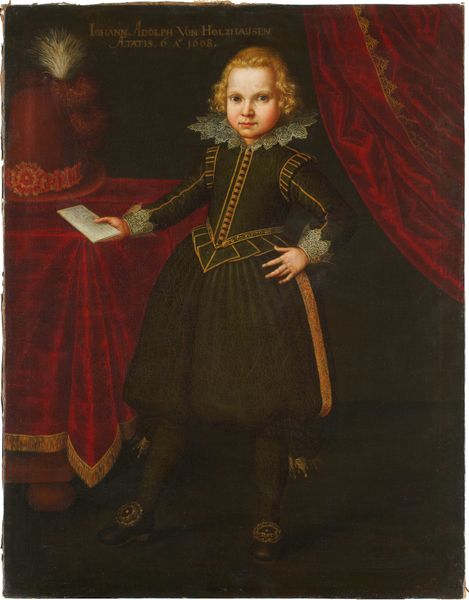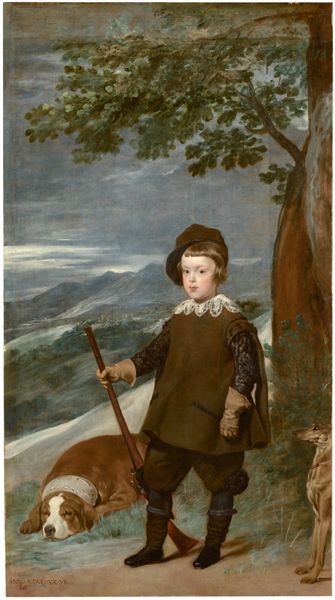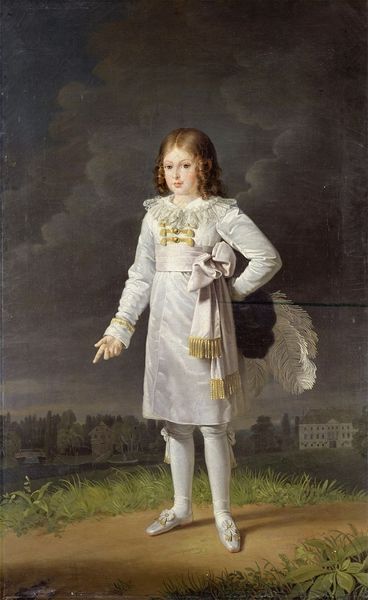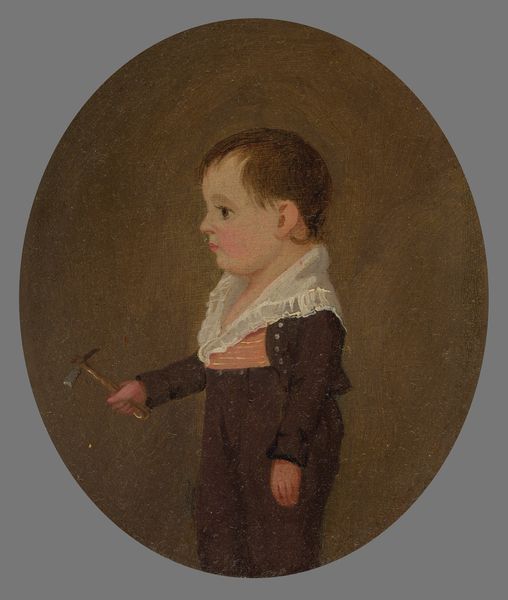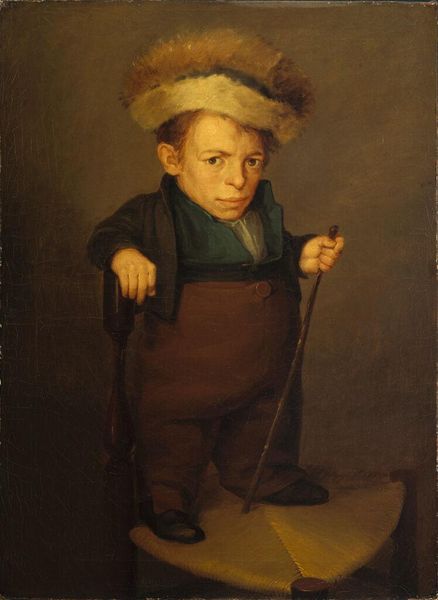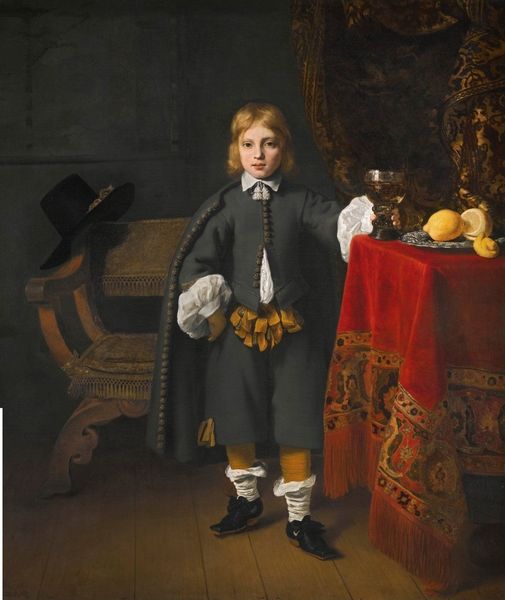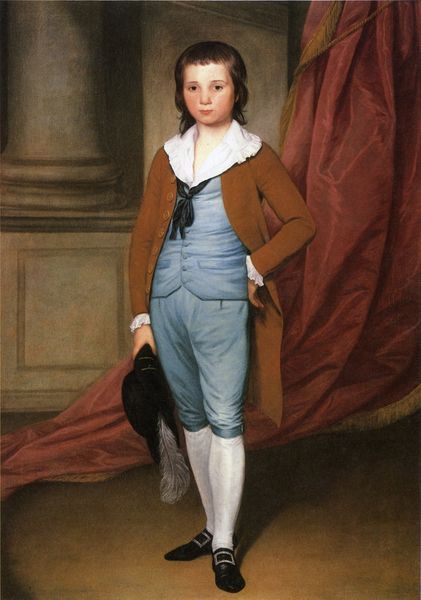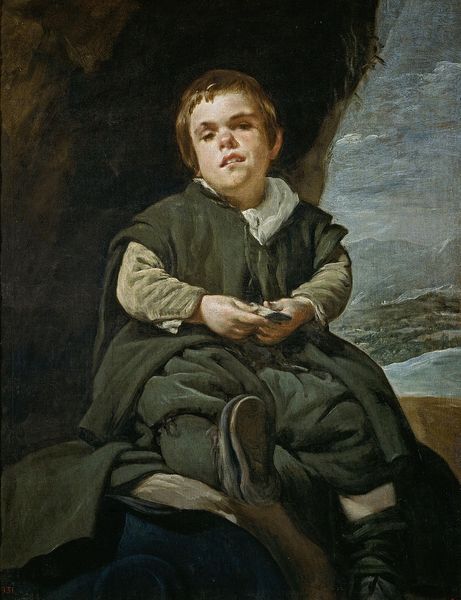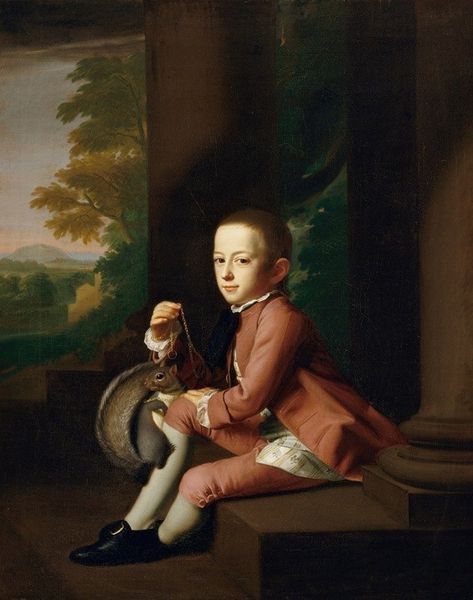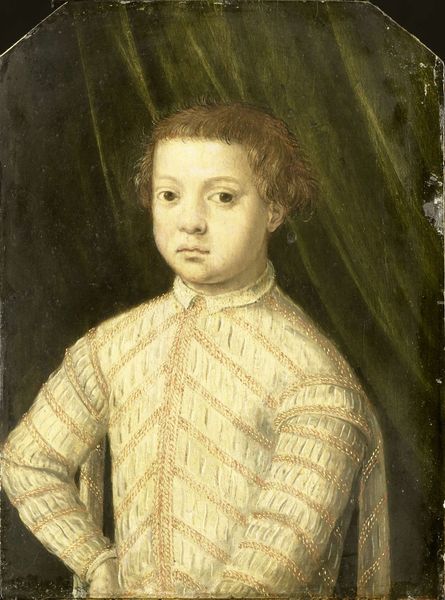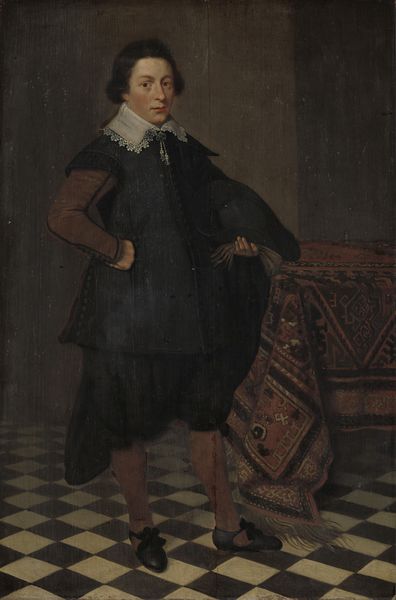
#
portrait
#
character portrait
#
portrait reference
#
child
#
portrait head and shoulder
#
framed image
#
lady
#
portrait art
#
portrait character photography
#
fine art portrait
#
self portrait
#
celebrity portrait
#
digital portrait
Dimensions: 131.1 x 93.4 cm
Copyright: Public domain
Editor: So here we have Manet's "Boy with a Sword," painted in 1861. It's striking, the boy's gaze is so direct, almost confrontational. What do you see in this piece, beyond just a child with a weapon? Curator: I see a complex dialogue between portraiture, historical representation, and the rising social status of the bourgeoisie in mid-19th century France. It's less about the boy himself, supposedly Manet's stepson Léon, and more about Manet's ambition to elevate genre painting to the level of history painting, a traditionally more esteemed category. Who did "sword" traditionally represent in portraiture, or society? Editor: Royalty? The military, perhaps? It feels a bit staged for a child. Curator: Exactly. Manet is deliberately playing with these associations. The sword isn't a symbol of the boy's personal power, but a signifier of the grand historical narratives that Manet is trying to access and, arguably, subvert. Think of how museums at that time were presenting history, particularly military history, as glorious and masculine. Manet challenges that idealized view by placing this theatrical prop in the hands of a child, pointing to the constructed nature of those narratives. This feels like commentary on social role-play, particularly class aspiration. Editor: That's fascinating! So, it's less about this specific boy, and more about the social commentary it makes through those symbols of power. Curator: Precisely. And how that commentary then, is placed on view for consumption within institutions such as this one, shaping public understanding. Museums aren’t neutral spaces. Editor: I see. This painting has given me a whole new perspective on how art reflects the relationship between social status, power, and representation within museum settings! Thanks for sharing. Curator: Likewise! Considering art’s social function gives art historical research new dimensions.
Comments
No comments
Be the first to comment and join the conversation on the ultimate creative platform.
